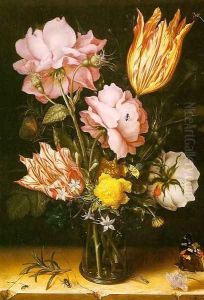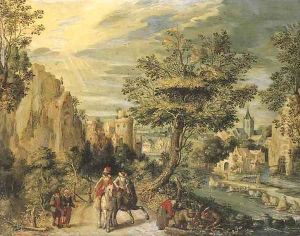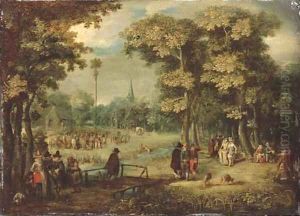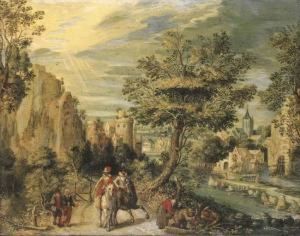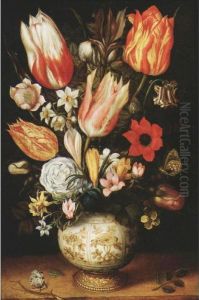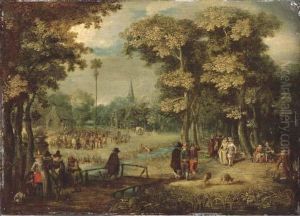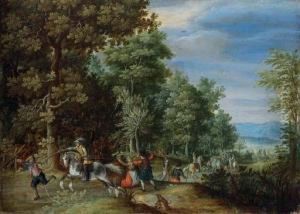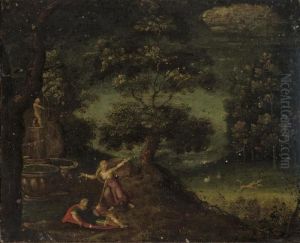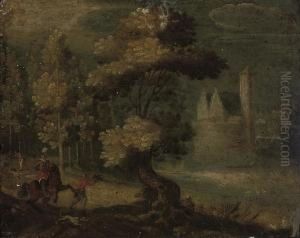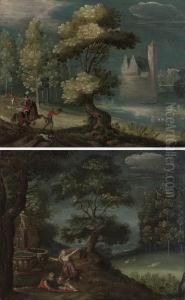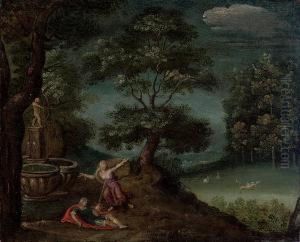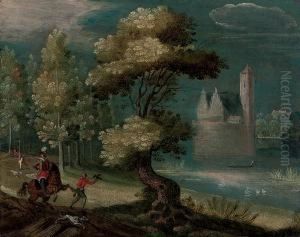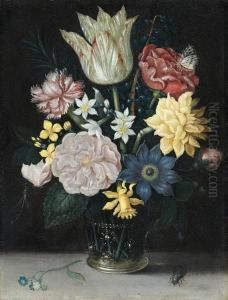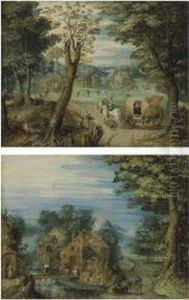Christoffel van den Berghe Paintings
Christoffel van den Berghe was a Dutch Golden Age painter whose life and works encapsulate the rich artistic tradition of early 17th-century Netherlands. Little is known about his early life, including the exact date and place of his birth, but it is generally agreed upon by art historians that he was active in Middelburg, in the province of Zeeland, from about 1617. His works suggest he may have been born around 1590. Van den Berghe's oeuvre reflects the varied interests of Dutch painters of his time, encompassing landscapes, still lifes, and religious subjects, though he is most noted for his contributions to landscape and floral still life painting.
Van den Berghe's artistic career flourished in a period marked by significant social, economic, and cultural shifts in the Netherlands, during the early days of the Dutch Republic. This era, known for its burgeoning middle class, saw a dramatic increase in the demand for art, particularly in the genres of still life, landscape, and genre scenes, which were favored for their decorative appeal and moral symbolism. Van den Berghe, although not as widely recognized as some of his contemporaries, was a part of this vibrant artistic movement.
His landscapes often depict serene, idyllic scenes that are imbued with a sense of calm and timeless beauty, reflecting the Dutch Golden Age's fascination with the natural world. These works are characterized by their detailed rendering and subtle use of light, showcasing Van den Berghe's skill in capturing the nuances of the landscape. In addition to these landscapes, Van den Berghe is credited with being one of the early practitioners of floral still life painting in the Netherlands. His still lifes are notable for their intricate detail, vibrant colors, and the skill with which he rendered textures, from delicate flower petals to gleaming glass and metal vessels.
Despite his contributions to Dutch art, Christoffel van den Berghe remains a somewhat elusive figure, with many aspects of his life and career still shrouded in mystery. His death is believed to have occurred around 1645, though, like much of his life, the exact details remain uncertain. Today, his works are held in various collections around the world, serving as a testament to his artistic legacy and offering insight into the rich tapestry of Dutch Golden Age painting.
